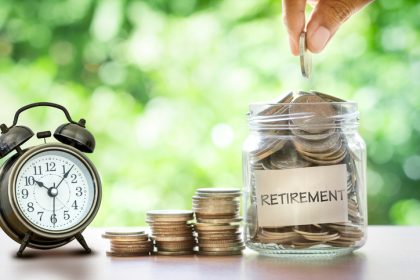Federal employees generally receive annuity-based pension funds when they retire. Depending on when you joined the government, this may be supplemented by Social Security and a private savings plan. The amount you receive from these various programs depends, among other things, on how long you worked for the government and at what age you retire. As a rule of thumb, the later you retire the more generous your benefits will be. However, at what age you should retire from the federal government largely depends on your finances and personal circumstances.
A financial advisor can help you create a retirement plan and decide when is the best time for you to retire.
How Does Federal Retirement Work?
As a federal employee, your retirement is typically based on one of two systems: the FERS and the CSRA. The exception to this would be if you’re a member of the military, but that’s beyond the scope of this article.
If you joined the government before 1987, your retirement is typically managed by the Civil Service Retirement Act (CSRA). This program primarily operates based on an annuity-funded pension. The terms of the CSRA are typically more generous than the benefits offered by the FERS.
Your start date in the federal government determines which program governs your employment.
When Can You Retire From the Federal Government?
In most cases, retirement depends on a combination of your age and how long you’ve worked for the federal government (known as your “service years”). To retire with benefits, most workers must meet one of the following conditions:
- Age: Minimum Retirement Age (MRA), Service Years: 10 (Reduced Benefits)
- Age: Minimum Retirement Age (MRA), Service Years: 30
- Age: 60, Service Years: 20
- Age: 62, Service Years: 5
Your minimum retirement age is the earliest at which you can voluntarily retire with benefits, and is determined by your date of birth. For anyone born after 1969, it’s 57 – meaning you can retire with benefits no earlier than age 57. It’s lower for those born before 1969.
For example, say you began working for the government at age 25. When you’re 57, you’ll have 32 years of “creditable service,” and will be able to retire and receive your full benefits. At 55, you’ll have the required 30 years of service, but won’t have reached your minimum retirement age, so can’t retire with benefits.
If you’ve reached the minimum retirement age, and have worked for the government for more than 10 years but less than 30, you can still retire and collect some benefits. However, your annuity-based pension will be reduced by 5% for each year you are under the age of 62. For example, if you worked for the government from age 47 to 57, you can retire, but you’ll receive 25% less from your pension (5% times five years). This is known as “MRA +10” retirement.
Involuntary and Deferred Retirement

There are some exceptions that allow you to receive retirement benefits based on layoffs, restructuring or other involuntary separations. In that case, the government might offer you an early retirement with benefits. If you worked for the government for at least 20 years, you can receive this offer at age 50. If you worked for the government for at least 25 years, you can receive this offer at any age.
If you leave federal service before you meet the age and/or service requirements, you can collect your retirement benefits later in life. This is called “deferred retirement.” It allows you to begin collecting benefits based on similar age and service requirements as above.
After you leave government service, your retirement will be deferred. Later in life, when you reach your minimum retirement age, if you worked for the government for 30 years, you can receive full benefits. If you meet the MRA +10 requirements, you can receive reduced benefits. And if you worked for the government for five years, you can receive benefits once you turn 62.
Retirement Benefits for Federal Workers
Under the FERS system, you receive three forms of retirement income:
- Social Security
- A Thrift Savings Plan
- An annuity-based pension
The thrift savings plan is a defined contribution, pre-tax plan that works very much like a 401(k). You will receive income from that plan based on your total contributions and savings. Social Security for FERS retirees works the same as it does for everyone.
The key difference is the pension. In retirement, you’ll receive a pension based on the highest average rate of pay you received during any three consecutive years of service. Put another way, the system finds your three highest-paying years in a row, then averages that income. This is called your High-3 Average.
You then receive a pension based on your age and service years at retirement:
- Under Age 62, all years of service – 1% of your High-3 Average for each year of service
- Age 62 or older, less than 20 years of service – 1% of your High-3 Average for each year of service
- Age 62 or older, 20+ years of service – 1.1% of your High-3 Average for each year of service
For example, let’s say you worked for the federal government from age 20 until age 60, the age at which you retire. You would receive a pension worth 40% of your average highest-paying years.
On the other hand, if you worked for the government from age 25 until 65, and then retire, you would receive a pension worth 44% of your High-3 Average. If your High-3 Average came to $100,000, you would receive:
- 1.1% * 40 * $100,000 = $44,000
- Total Pension = $44,000 per year (plus Thrift Savings and Social Security)
Under the CSRS system, the formula is more generous, but also more complicated. CSRS-eligible employees usually don’t receive Social Security credits based on their government service. You can still receive benefits based on any Social Security credits earned from other employment. You can also contribute to a Thrift Savings Plan, but you won’t receive matching contributions.
Instead, CSRS-eligible employees receive a more generous pension based on their High-3 Average. This pension is calculated based on years of service as follows:
- First 5 Years – 1.5% of your High-3 Average for each year of service
- Second 5 Years – 1.75% of your High-3 Average for each year of service
- Years 10+ – 2% of your High-3 Average for each year of service
So, for example, say that your High-3 Average is $100,000 and you retire after 40 years of government service. Your pension would be:
- 1.5% * $100,000 * 5 = $7,500
- 1.75% * $100,000 * 5 = $8,750
- 2% * $100,000 * 30 = $60,000
- Total Pension = $76,250 per year (plus individually-funded Thrift Savings)
When Should You Retire
Your best age to retire from federal government is an entirely personal decision.
As a federal worker, you can calculate your maximum retirement income based on age, retirement system (FERS vs. CSRS) and other benefits. In general, the rule of thumb here is the same as in all retirement planning. The longer you wait, the more money you’ll collect in retirement. However, there are a few cutoffs and cliffs to be aware of:
- If you worked for the government for less than 30 years, retiring before age 62 can cut your benefits due to the MRA +10 rule.
- Retiring before you reach 20 years of service and/or before you turn 62 can cost you the 10% FERS bonus.
- If you’re on the FERS system, you will receive Social Security. This means that you’ll receive partial benefits before age 67 and increased benefits if you wait until age 70.
- CSRS employees don’t have the same kind of tiers to watch out for. Their system is more gradual and Social Security is less likely to be an issue. For FERS employees, you’ll receive the most money in retirement if you can wait until the 1.1% bonus kicks in and you turn 70 for the maximum Social Security benefit.
Under both systems, your pension will increase for each year that you work. Beyond that, the question is one of personal preference and finances. Generally, you should retire when you can look at your benefits and savings, and know that those figures add up to a comfortable income that you can rely on.
Bottom Line

There’s no age at which you should retire from federal government. That’s entirely up to you. But knowing the factors that affect your income in retirement, and how to calculate it, can help you create a plan and figure out which age is best for you.
Retirement Tips for Government Employees
- No matter when you started, government retirement is based on the High-3 Average. So it helps to make sure you understand what that is and how it works.
- A financial advisor can help you build a comprehensive retirement plan. Finding a financial advisor doesn’t have to be hard. SmartAsset’s free tool matches you with up to three vetted financial advisors who serve your area, and you can have a free introductory call with your advisor matches to decide which one you feel is right for you. If you’re ready to find an advisor who can help you achieve your financial goals, get started now.
Photo credit: ©iStock.com/brizmaker, ©iStock.com/andreswd, ©iStock.com/shapecharge
Read the full article here

















